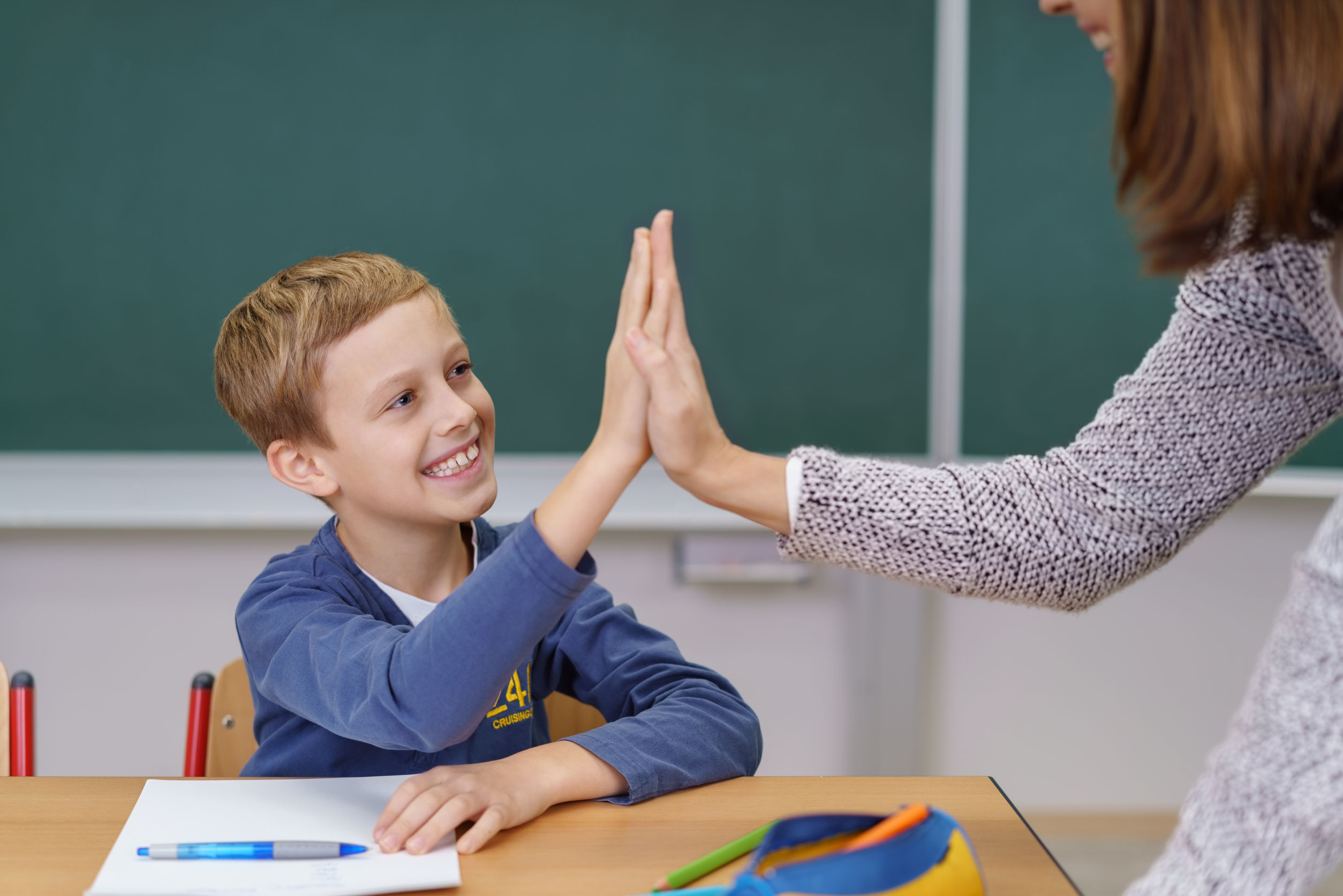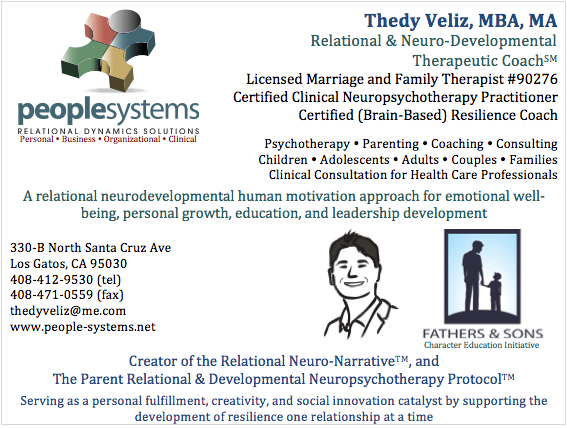Working with Children
“The child may have a disorder or a set of disorders, but he is not the disorder. He is a real human being with real feelings, real desires, and real wishes.”
- Stanley Greenspan, MD
Working with children is a challenging endeavor. While they might admit that something is not right, in many cases they are unable to truly express what is causing them to exhibit the behaviors that brought them to see a counselor. Many of them feel ashamed of their behavior, and might start believing that they are 'bad' because of it. I have found that children as young as six are able to come up with elaborate and believable reasons for their behavior. The child’s intentions might not be to deceive, but rather to attempt to justify to themselves that they are not 'bad.' At times, they become overwhelmed by the very specific questions that concerned adults might attempt to ask them (e.g., what is going on with you, why did you hit your best friend) as they are unable to connect their emotional content which is a ‘right-brain heavy’ process with their thought content, a ‘left-brain heavy’ process.
Such justifications might make it more challenging to find out what is affecting the child. Thus, instead of engaging the child from a purely cognitive 'adult-like' way, I attempt to allow the child to show me how he feels through his play.
Focusing on Emotional Stress
I have learned to conceptualize children’s behavioral problems as an expression of stress. Children encounter stress on a daily basis due to the many relational challenges that they encounter at home, along with the academic and social stress at school. Yet, I agree with Hans Selye, M.D., author of The Stress of Life, that for a human being the most critical stressor is the one related to the loss of love (real or perceived) – the so-called “relational stress” (Seyle, 1978).

My Relational Approach with the Child
I use Non-Directive Play Therapy, a methodology developed by Virginia Axline, Ph.D. (Axline, 1947, 1964), as a way to join with the child’s internal world (i.e., his memories, thoughts, feelings). By using this approach, I invite the child to take control of the play and allow him to develop a relationship with me on his own time and in his own way. During this time, my role is to notice his creativity, his insight, his wittiness, and his uniqueness. My reactions are not only to what he is doing, but most importantly to what he might be thinking and feeling as I focus on his non-verbal communication. My job is not to quickly interpret his behavior, but to allow the child to make me feel how he is feeling and from this point to slowly attempt to give words to the feelings that the child might be experiencing. This results in the child becoming aware of how his thoughts, feelings, and behaviors are interconnected. In many cases, the child is overwhelmed by emotions that are conflicting with one another. He might feel sadness, shame, anger, and fear at the same time to the point that he becomes disregulated.
In these cases, children might benefit from being helped to use words to express their emotions. What this means from an interpersonal neurobiology perspective is that the child is helped to integrate the content of his left and right brain with the help of an adult. As Daniel Siegel, MD has suggested, as the adult engages the child in this way, the adult is in essence lending his mature brain to the child (Siegel & Bryson, 2011).
Parent Therapy: My Relational Approach with Parents
“… consequences work against the desire of the parent for their children to eventually be able to control their outbursts because consequences increase the disregulation of the primitive (emotionally sensitive) part of the brain. Telling the child to chill, explaining to the child why he should chill, threatening the child with a consequence, and/or giving the child a consequence will all work against what the parent wants to accomplish. We didn’t have the research findings to know this in the past, but we do now…”
While working with the child, I use the information obtained from my sessions to attempt to understand the family system that the child is a part of through parent therapy sessions. Through these sessions, I help parents to experience how the child is feeling. While at first parents are concerned about the child’s negative behavior, I have found that as the parents are able to feel what the child is feeling, the focus changes. The path that I encourage parents to follow is the one that helps parents become curious about what is happening inside the child and causing the child to 'act out.' In many cases, parents know what is causing the child to have behavioral problems, but they know it in a ‘cognitive way.’ This cognitive way quickly points to the behavior as the source of the problem, when in reality it is the meaning that the child ascribes to the content of his internal world (i.e., his memories, thoughts, feelings) that the child lives with, and the child’s inability to make sense of this content that are causing the behavior. When we are able to focus on the internal content of the child, we are able to realize that at the center of the child’s emotional world is his perception of his relationship with his parents. Once parents start to realize that there is a critical relational component to the therapeutic work, we are ready to work on repairing and strengthening the relationship.

Repairing the Relationship and Preparing to Transition
Once I am able to help children and their parents develop a common language which focuses on their relationship, I proceed to engage children and parents in family sessions to work on repairing and improving their relationship. My approach to repairing the attachment relationship has been influenced by Daniel Hughes, PhD and his Dyadic Developmental Psychotherapy methodology (Hughes, 2006; Hughes, 2009; Hughes, 2011; Hughes & Baylin, 2012; Baylin & Hughes, 2016).
At some point during this stage, I am able to help the parent and the child connect in a relational way in which the child is able to express his fears related to feeling bad, inadequate, or feeling like they ‘might not be loved by their parents.’ This point of the therapy is critical, as parents are usually able to witness a part of their child that they might have not experienced before. Very quickly, the child’s behavior becomes a part of the challenge that is being addressed rather than the challenge itself. Parents start to recognize that they might have confused the child with the behavior, and in showing their disapproval for the behavior, they might have unintentionally communicated disapproval for the child himself. What counts here is not what the parent’s intentions were, but rather what children understood and found to be true - an emotional (and illogical) process that is highly mediated by the limbic system whose main focus is safety and survival, and as a result tends to default towards negative emotions.
What I have found is that there appears to be lots of room for misunderstandings when people are trying to love one another. As any adult involved in a long-term relationship can attest, love is a difficult enterprise, and this also applies to a relationship between children and their parents.
At the end of this stage, I focus on helping the parents learn interventions that they can practice on a regular basis to assist the child identify, express and process (i.e., self-regulate) her internal states while maintaining a strong relationship. In essence, the therapeutic interventions that are learned by the parents during therapy become part of the parents’ toolbox for ensuring the child’s ongoing healthy development.
References
- Axline, V. M. (1947). Play therapy. New York, NY: Ballantine Books.
- Axline, V. M. (1964). Dibs: In search of self. New York, NY: Ballantine Books.
- Baylin, J. & Hughes, D. A. (2016). The neurobiology of attachment focused therapy: Enhancing connection and trust in the treatment of children and adolescents (Norton Series on Interpersonal Neurobiology). WW Norton & Company.
- Hughes, D. A. (2006). Building the bonds of attachment: Awakening love in deeply troubled children. Jason Aronson.
- Hughes, D. A. (2009). Attachment-focused parenting: Effective strategies to care for children. WW Norton & Company.
- Hughes, D. A. (2011). Attachment-focused family therapy workbook. WW Norton & Company.
- Hughes, D. A., & Baylin, J. (2012). Brain-Based Parenting: The Neuroscience of Caregiving for Healthy Attachment (Norton Series on Interpersonal Neurobiology). WW Norton & Company.
- Selye, H. (1978). The stress of life.
- Siegel, D. J., & Bryson, T. P. (2011). The whole-brain child: 12 revolutionary strategies to nurture your child's developing mind. Delacorte Press.
